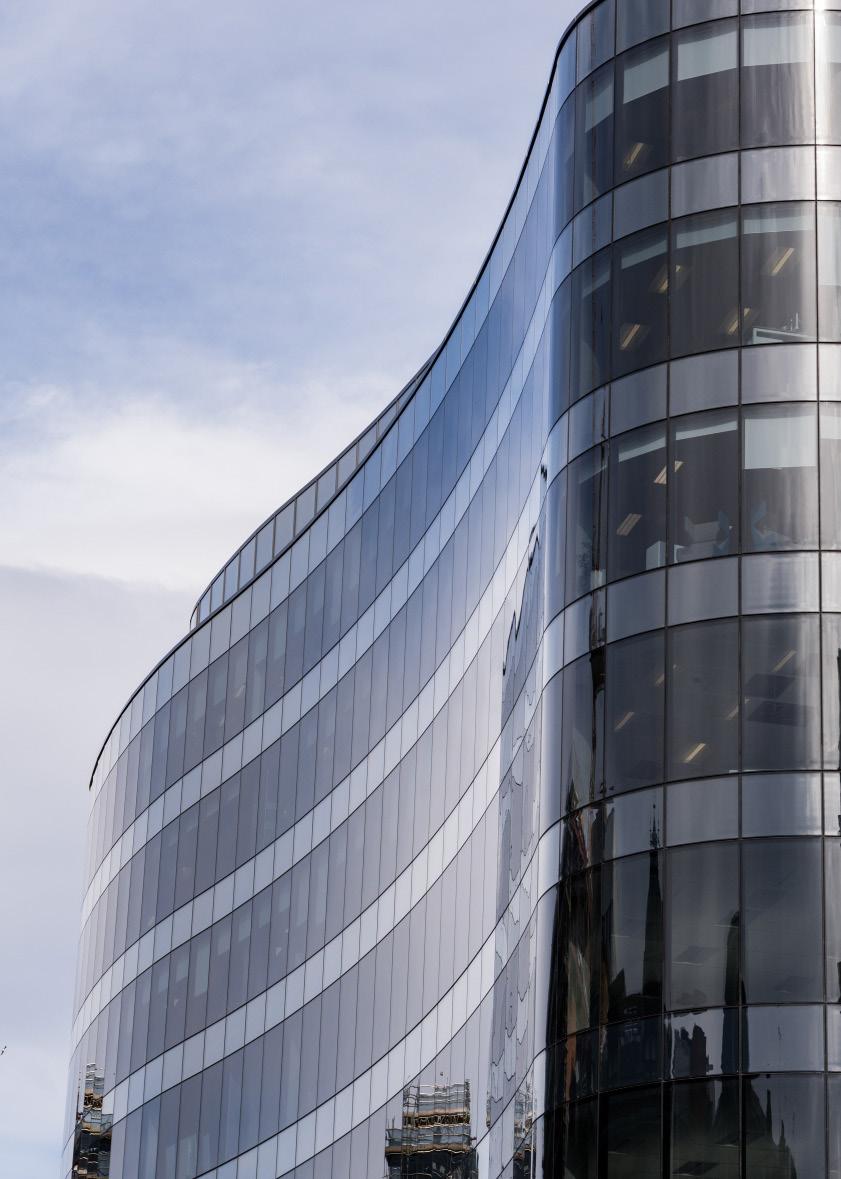




Did you know we’re sewage pump experts, too? Many people don’t!
Well, from installation to ensuring your system flows freely without disruption, your local Metro Rod team offer complete top-tier drainage and sewage pump solutions, backed with over 40 years’ experience and technical know-how.

Business Development Director James Scrivens james@abbeypublishing.co.uk
Production Sarah Daviner sarah@abbeypublishing.co.uk
Accounts Manager Katie Brehm accounts@abbeypublishing.co.uk
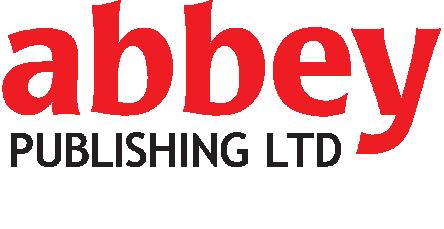
BFM is published digitally 10 times a year by Abbey Publishing Ltd. To receive a copy free of charge, contact our offices.
Tel: 01933 316931
Email: bfm@abbeypublishing.co.uk www.bfmmagazine.co.uk www.abbeypublishing.co.uk

www.twitter.com/ BFM_Magazine
Subscriptions are available via www.bfmmagazine.co.uk/subscribe




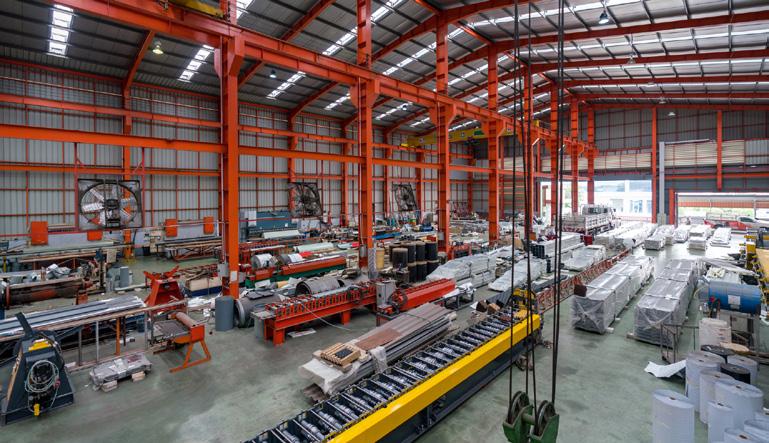
A prestigious store that redefines luxury shopping in Edinburgh reopens with brand new Hochiki fire detection system.
Multrees Walk, in the heart of St James’ Quarter, a prestigious shopping destination in Edinburgh, offers a curated selection of high-end brands and premium shopping experiences. Earlier this year the retail centre witnessed an extension to a prestigious store that redefines luxury shopping in Edinburgh. As the revamped store prepared to open its doors, a critical element of its infrastructure was installed: a state-of-the-art fire detection system from Hochiki Europe.
High-end luxury retailers prioritise discreet fire detection systems to maintain their brand’s aesthetic appeal. These stores often feature meticulously designed interiors with clean lines and minimal distractions, meaning any visible fire detection devices can disrupt the desired ambiance and detract from the overall shopping experience. By opting for discreet systems, these retailers ensure that fire safety remains a top priority without compromising the store’s luxurious atmosphere.
With its stunning interior design and exquisite collection of accessories and ready-towear items, this new store in Edinburgh, demanded a fire safety solution that was both discreet and highly effective. GB Integrated Systems (GBIS), specialise in providing fire detection and security system solutions for commercial properties. Having worked with Hochiki products for several years, trusting their reliability in retail environments, they knew the global fire manufacturer’s ESP range would provide the perfect answer.
Mike
Gray, Technical Director

from GBIS told us:
“We chose Hochiki as it offered a comprehensive solution for this project with a broad selection of devices, including smoke detectors, heat detectors, manual call points, base sounders and air sampling system.”
The project comprised over 40 analogue addressable devices and a sophisticated air sampling system, ensuring the highest standards in fire safety design. The air sampling system, seamlessly integrated into the fire detection loop, was a crucial component of the installation.
Air sampling enables precise detection in hard-to-reach areas like ceiling voids, ensuring comprehensive coverage throughout a retail environment. The Hochiki devices respond accurately to real fire conditions while minimising false alarms through multi-sensor technology, environmental adjustments, and filtering mechanisms. With these features, the team at GBIS could reassure the luxury retailer that the fire alarm system could effectively differentiate between non-threatening signals and actual fire hazards, thereby improving safety, reducing false alarms, and enhancing operational efficiency within the store.
A key challenge was interfacing the fire alarm system with the shopping centre’s security control centre. This complex integration required careful planning and execution to ensure that the system would respond appropriately to different
fire scenarios. In the event of a fire within the store, the system would trigger specific alarms and notifications, while a fire in the shopping centre would activate different alerts, minimising disruption to the store’s operations.
“Installing the fire alarm system in this premium, high-end retail space is especially exciting because it brings innovative fire safety and sophisticated technology into a luxurious environment where safety and customer experience are paramount. The precision and reliability of our install aligns perfectly with the retail brand’s high standards, protecting valuable merchandise, ensuring shopper safety, and minimising disruptions from false alarms. With hidden devices and seamless integration, the Hochiki ESP range not only safeguards the premises but also maintains the aesthetics, adding a layer of security that complements the brand’s reputation for excellence and customer care. It’s very satisfying to see the finished Hochiki install in premises of this nature and instils a great sense of pride in the work we do.”
This successful project showcases the power of Hochiki’s fire detection solutions to protect high-end retail environments. By combining innovation, reliability, and aesthetic appeal, Hochiki has helped to create a safe and secure space for customers to indulge in the ultimate luxury shopping experience.


The Cleaning & Hygiene Suppliers Association (CHSA) completed 89 audits of its manufacturing members and 52 audits of its distributor members in 2024. Members achieved high levels of compliance, guaranteeing ‘what’s on the box is what’s in the box’. Conducting the audits, the Independent Inspector checked over 1,700 labels and 1,000 products across all our Manufacturing Schemes. Within the Distributor Scheme approximately 31,250 products from Accredited Manufacturers and over 4,000 products from non-accredited manufacturers were checked. The latter were classified as compliant with the relevant scheme at the time of audit.
Any member that falls below the required standard is issued with a warning notice. They are then re-audited to ensure the appropriate remedial action has been taken to maintain their membership. This occurred twice in 2024, and the members involved have now completed three consecutive successful audits.
Lorcan Mekitarian, chair of the CHSA, explained: “We offer buyers of cleaning and hygiene products an important guarantee. Our inspection process means they can trust our Accreditation Scheme Marks. It means the products that carry an Accreditation Scheme mark match the specification and are fit for purpose. ‘What’s on the box is what’s in the box.’
“Our Schemes have never been more important than now. Our industry is incredibly competitive, and costs are going up. Customers want more for less. It has led to the growing trend for open pricing on the web and intermediaries promising products at incredibly low prices while paying little or no attention to quality and performance. Buyers are finding themselves facing the issues that drove us to set up our Accreditation Schemes first place: product short on the count, width or length, that does match the specifications on the box or, importantly, is not fit for purpose. The mark of the relevant Accreditation Scheme, which is underwritten by our auditing process, is the guarantee buyers can rely on.”
The CHSA’s Accreditation Schemes are for manufacturers of paper-based products, plastic-based products, cottonbased products, and cleaning chemicals, and for distributors of cleaning and hygiene products.
The CHSA has integrated the Competition & Markets Authority’s Green Claims Code into its Code of Practice, which is signed by every member. It requires environmental claims to be truthful and accurate, clear and unambiguous, consider the full life cycle of the product or service, be substantiated and must not hide important or relevant information. Also, comparisons must be fair and meaningful.
The combination of the Code of Practice and Accreditation Scheme membership means every member:
• Trades ethically and sustainably;
• Provides quality, fit for purpose products; and
• Makes sure what’s on the box is what’s in the box.
@CHSACleaning www.CHSA.co.uk
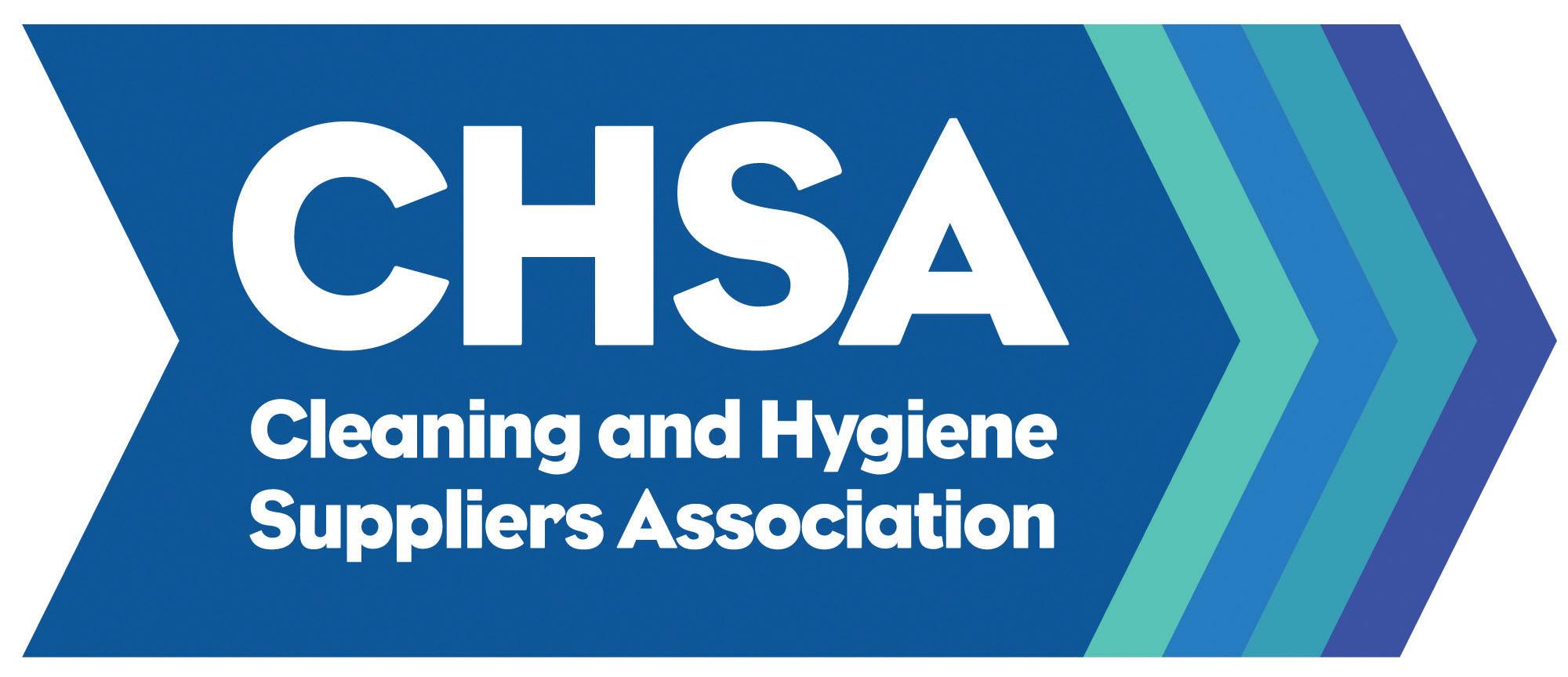
events of falling masonry per year in the UK*


After years of looking the other way, Janet’s façade finally cracked and what lurked beneath was a waking nightmare…
With a growing backlog of maintenance and repairs, with increasing incidents of injuries from falling masonry, can you afford the financial and reputational hit from a damaged façade?
There are an estimated 14,400 events of falling masonry and debris annually in the UK*, with at least 5 instances of death or serious injury per year**. Could your building be at risk?
In the last 24 months, Thomann-Hanry® has removed over 750kg of loose masonry during façade surveys With storms predicted to become more frequent and intense, cracked masonry could pose a serious liability.

With decades of experience in surveying, maintaining, and cleaning commercial façades, Thomann-Hanry® helps prevent potential hazards. We conduct surveys from MEWPs (Mobile Elevating Work Platforms), allowing for close-up inspections and immediate removal of loose masonry, meaning that you don’t have to shroud your building in unsightly scaffolding which also saves you time and money.
Our detailed façade surveys identify hidden issues and key concerns, enabling you to make informed repair or replacement decisions before problems escalate.
Weev and The Boulevard both record ‘best year ever’ as they announce joint venture
Northern Ireland’s fastestgrowing electric vehicle infrastructure company has today announced a new strategic partnership with leading premier designer shopping outlet, The Boulevard, to allow customers to charge their car while they shop. Weev finished 2024 as a record year with +300% charging capacity and increased its new users by +91% compared to 2023. The EV leader also acquired the public and workplace EV charging network and customer base of local renewable energy business Everun at the end of 2024. Weev was also ranked the number one most reliable Charge Point Operator in Northern Ireland, sitting almost 10% ahead of its next closest competitor Tesla, according to Electric Vehicle Association Northern Ireland.
Bringing Rapid and AC charging to The Boulevard sees Weev extend its network
into the retail industry, at one of Northern Ireland’s most thriving destinations. The Boulevard, which is located on the main A1 motorway between Belfast and Dublin, ended 2024 as its best year yet with sales up +6% in December, compared to the year before.
With a host of high quality retail stores such as kate spade ny, Levi’s, Nike, GUESS and Marks and Spencer along with a strong food and beverage offering. Looking to 2025 and beyond, Weev’s new charging location will be available to even more visitors as The Boulevard is set to welcome Hollywood Bowl to further bolster its leisure offering alongside existing tenant Omniplex Cinema.
Thomas O’Hagan, Weev CCO said: “We are delighted expand our EV charging network to leading shopping and leisure destination, The Boulevard. Located on the main
motorway connecting major cities Belfast and Dublin, and with a roster of extremely highquality brands, The Boulevard is the perfect pit stop charging point location, benefitting the scheme, Weev and customers alike. 2025 is going to be a very exciting year for Weev as we continue to expand and move the dial on Ireland’s EV outputs and offerings.”
Andrew Hamilton, Operations Manager at The Boulevard said: “Our sustainability and ESG outputs are extremely important to us at The Boulevard and a huge priority as we move into 2025. We are very conscious of our carbon footprint here and so being able to offer customers rapid EV charging whilst they visit our scheme is essential to us. We are thrilled to partner with local EV operator Weev to strengthen this offering and encourage even more shoppers to pull in and power up at The Boulevard.”
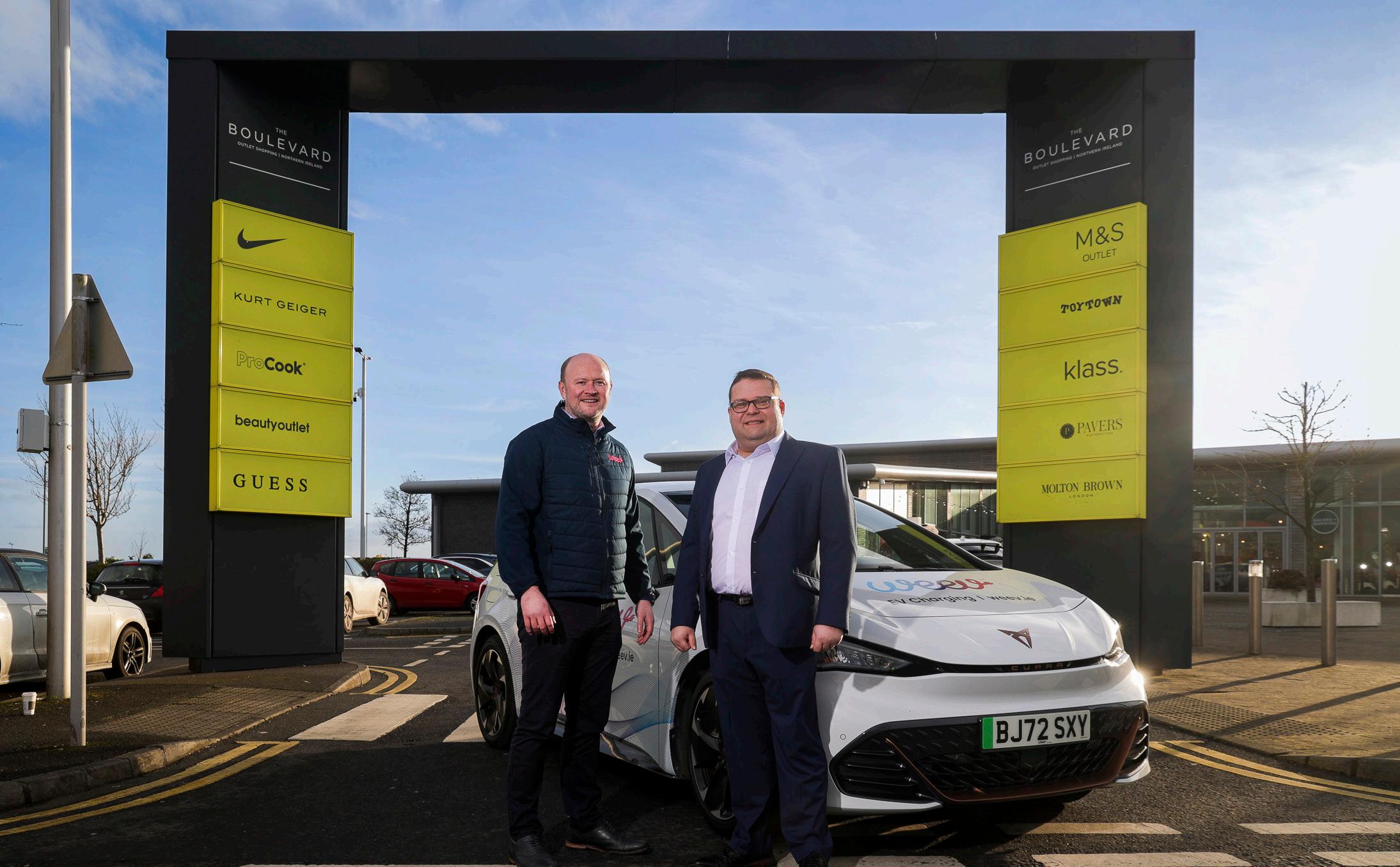


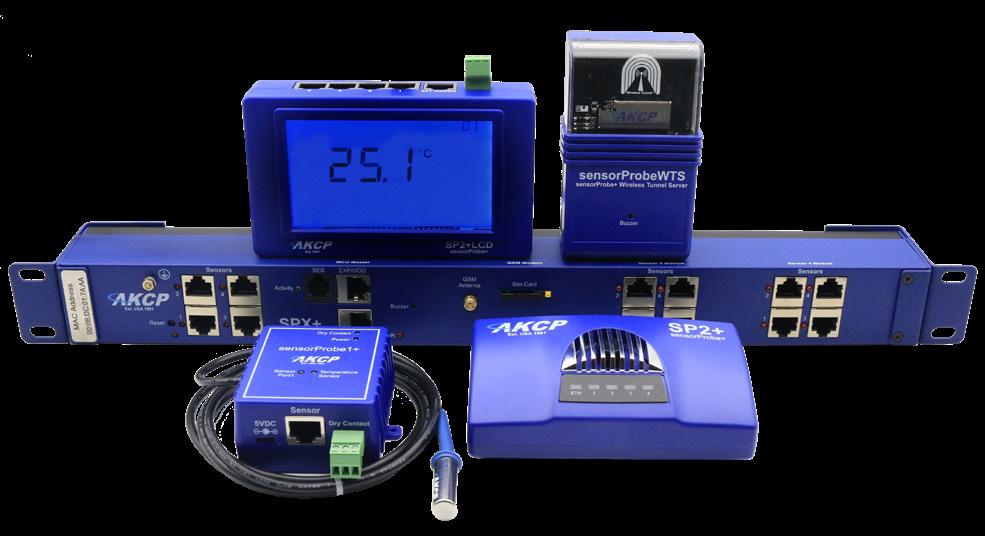
Contact us for a FREE site survey or online demo to learn more about our industry leading environmental monitoring solutions and how they can help to reduce your energy costs. Scalable, with Ethernet and WiFi connectivity, over 20 sensor options for temperature, humidity, water leakage, airflow, AC and DC power, a 5 year warranty and automated email and SMS text alerts.
Premier Technical Services Group Ltd (PTSG) has made four new appointments in senior positions throughout the company, signalling its intent to deliver is ambitious plans for growth.
Alison Chard, Director of Value Creation and Project Management. Alison will play a central role in driving growth, optimising resources, and delivering successful projects that align with PTSG’s goals. Alison reports directly to CEO Nikhil Varty.
Kate Williamson, Head of HR Operations and Business Partnership. Kate will combine operational efficiency with strategic collaboration, ensuring the Group’s human resources function run smoothly while aligning HR delivery with broader business objectives.
Victoria Whittle, Chief Technology Officer. Victoria will be responsible for overseeing PTSG’s technological direction. This involves aligning the Group’s technology strategies with its business goals to drive innovation and competitive advantage.
Steven Miles – Head of Data and Analytics. Steven is a senior executive and will be responsible for overseeing PTSG’s data strategy. He will be central in data-driven decisionmaking, leveraging analytics to support business goals. This role will provide valuable insights for the Group’s success.
While PTSG has secured year-on-year growth each year since it began trading in 2007, its current plan of growth was boosted in 2019, when Macquarie’s Principal Finance business (Macquarie) acquired the Group at a value of over £300 million. Two years later, in 2021, Warburg Pincus invested more than £600m alongside Macquarie, supporting unprecedented growth potential for the company.
Nikhil Varty, Chief Executive Officer of PTSG, said: “Last year, we added Flame Control in the Netherlands (Fire Safety) and Whites (Electrical) to our portfolio as we continue to focus on new opportunities.
“2024 also saw PTSG significant growth, with a proportional uplift in the number of customers the company
now serves. Going into 2025, we are making significant investments in a number of areas, including sustainable fuel technologies withing our fleet, and new technology in areas such as customer relationship management and data warehousing.
“The four key new appointments to our leadership team will play a crucial role in maximising these investments. 2025 will be a year to watch PTSG as we continue to deliver our ambitious growth plan.”
Premier Technical Services Group Ltd (PTSG) is a multinational, multidisciplinary building compliance business specialising in access and safety, electrical services, façade maintenance and cleaning, fire solutions and water treatment.
The company has created five symbiotically linked business divisions from which with 3,000 specialists delivering >170 building compliance, installation and maintenance services to over 30,000 customers and caring for more than 300,000 assets UK-wide and overseas.
www.ptsg.co.uk

PTSG Fire Solutions Ltd offers an unrivalled breadth and depth of fire safety and security services.
With five independent business divisions delivering the full range of specialist services, PTSG ensures buildings of all kinds are safe, clean and compliant – in all sectors.

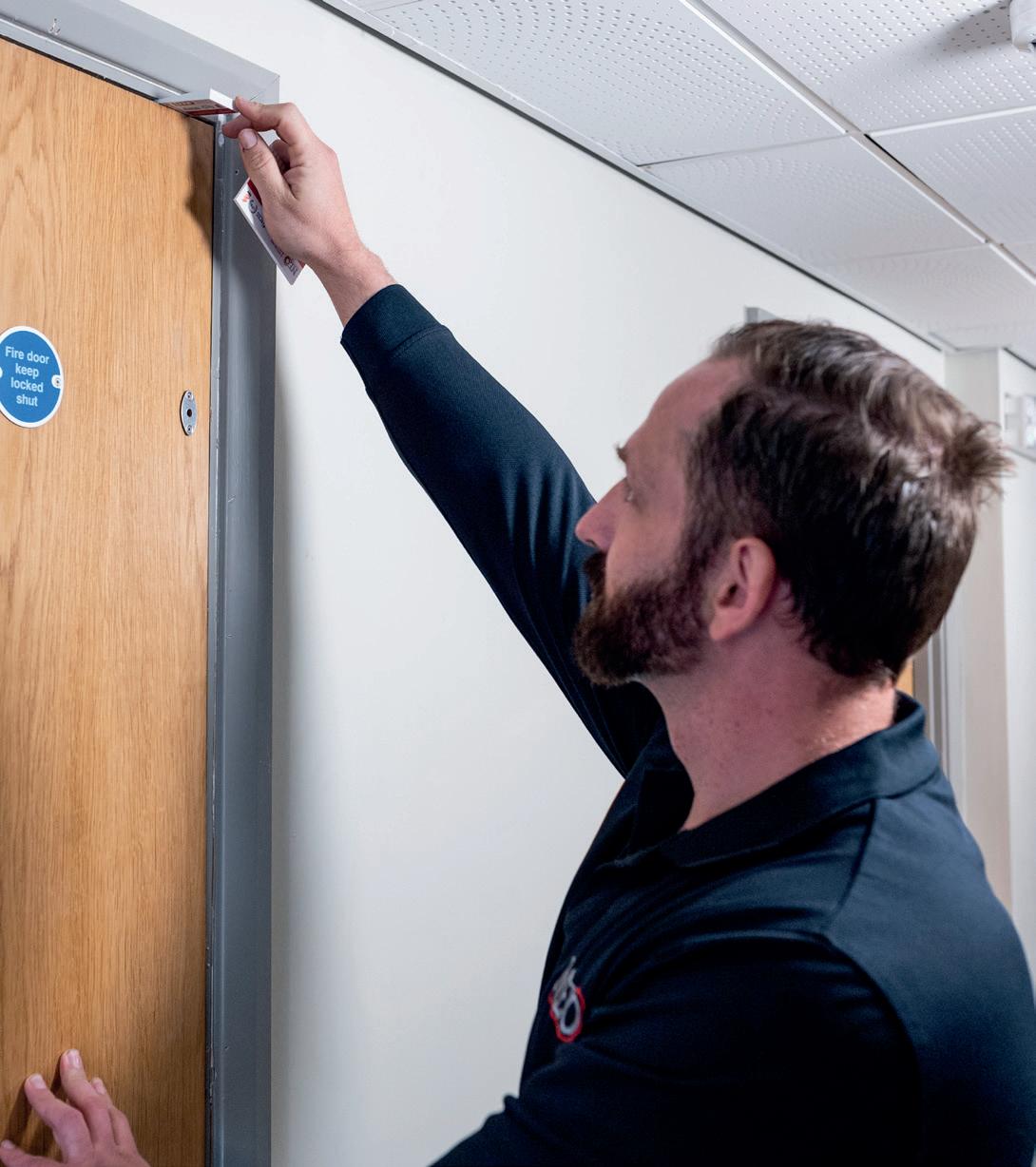


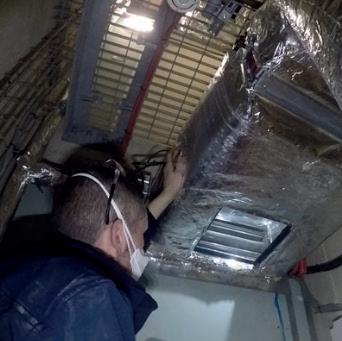
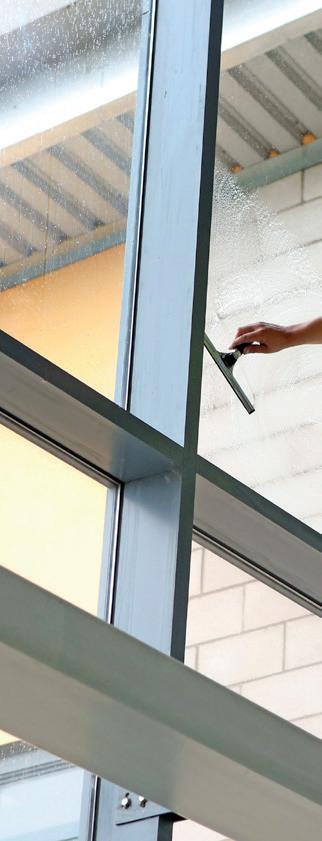
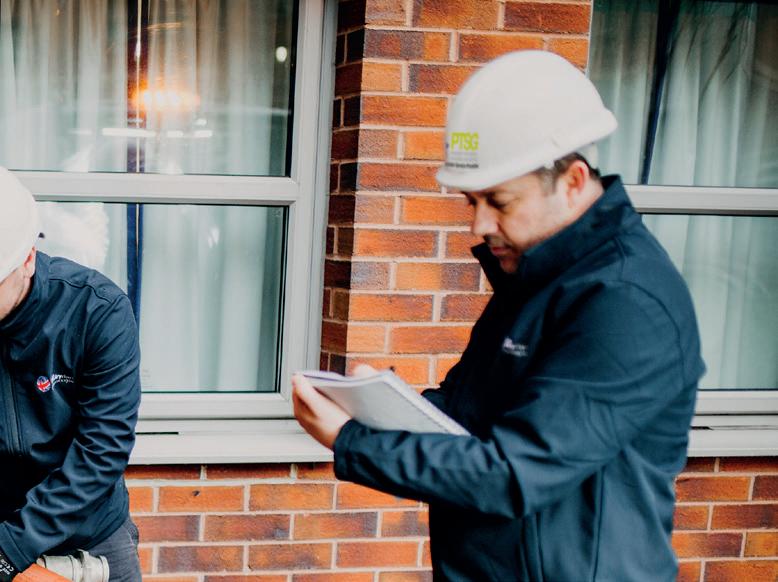

The built environment accounts for approximately 25% of the UK’s total carbon emissions, with traditional and heritage buildings playing a significant role in this figure.
According to the government’s review on adapting traditional homes for energy efficiency, 5.9 million buildings were constructed before 1919 – a sizeable proportion of the UK’s housing stock that requires urgent attention if the nation is to meet its net zero targets.
The government has set a legally binding goal to achieve net zero by 2050, with interim milestones to reduce 50% of
Scope 1 carbon emissions by 2032 and 75% by 2037. For landlords of heritage properties, this presents both a challenge and an opportunity.
Decarbonising these buildings can significantly advance these goals, with periodic renewal, and conservationfocused restoration reducing carbon emissions by 30–50% and energy consumption by up to 40%.
In this article, Tim DarwallSmith, Director at SBA Property Management, explores the crucial role of decarbonising traditional homes on the road to net zero.
Retrofitting is one of the most effective solutions for improving energy efficiency in traditional properties. By addressing heat loss through walls, doors, windows, floors, and roofs, retrofitting can cut heating costs, energy use, and emissions.
However, older buildings come with unique challenges that landlords must navigate, including moisture movement and planning restrictions. Heritage buildings, often located in conservation areas, may face limitations on changes such as installing solar panels or heat pumps. They are also often “moisture open,”

meaning they allow moisture to pass through materials like timber and brickwork.
To overcome these challenges, landlords should adopt best-practice frameworks like the ‘Whole Building Approach’ and ‘Joined-Up Process’, as outlined by Historic England.
The Whole Building Approach ensures that all systems work together while respecting the property’s location, history,
landlords can also educate tenants on how to use and maintain their property effectively – benefitting not only the property itself but their relationship with the tenant.
Landlords can also access government-backed schemes to support decarbonisation. For example, the Energy Company Obligation (ECO4) scheme, which runs until March 2026, helps property owners— including those with heritage
Heritage buildings can be complex when it comes to making improvements while maintaining their unique character. Through solutions such as conservationfocused retrofitting and green technologies, landlords can not only meet their environmental obligations but also reduce energy bills and improve the quality of living for tenants.
Decarbonising heritage properties now is not just essential for the environment, but also ensures long-term benefits, including energy

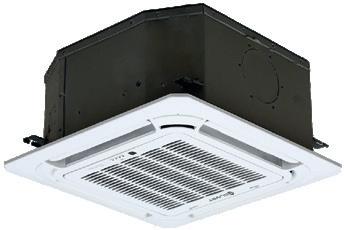


New EU legislation – the Corporate Sustainability Reporting Directive (CSRD) and the EU Green Claims Directive – is to tighten sustainability reporting and combat greenwashing. The purpose of the legislation is to enhance transparency, accountability and sustainability in business practices.
All UK businesses with operations or a market presence in the EU are affected.
The Cleaning & Hygiene Suppliers Association’s (CHSA) has published a Fact Sheet, explaining the legislation and its implications for manufacturers and distributors in the cleaning and hygiene industry.
The CSRD increases transparency, mandating detailed reporting on sustainability risks, opportunities and impacts using a double materials approach. This means it considers the impact on the company and its external effects on society and the environment. The CSRD is to be implemented in phases, the final group - listed small and medium-sized enterprises – needing to comply from 1 January 2026. The penalties for non-compliance, which will vary by member state, will include fines, reputationallydamaging public disclosure and civil liability for damages.
The EU Green Claims Directive is aimed at ensuring environmental claims made by businesses are accurate, verifiable and transparent. To be compliant, companies must use clear, evidencebased criteria to substantiate their environmental claims. Environmental claims must
be verified by independent, accredited third-party organisations before they can be made public. There must be transparency in labelling and new rules to ensure both public and private environmental labelling schemes are solid transparent and reliable.
For more information, review the CHSA’s new Fact Sheet on its website.
Every member of the CHSA has signed its rigorous Code of Practice, which demands members trade ethically. Amongst other stipulations, it requires members to:
• Conduct business dealings in an open, honest, fair and proper manner and in accordance with the laws, rules and regulations of the UK and EU.
• Ensure all public statements made by and on behalf of the Member are decent, honest and truthful.
• Ensure no false or exaggerated claims
are made verbally, in literature, electronically or in any other way.
• Hold and provide evidence on request for product and service claims, particularly with reference to legislation, certifications and accreditations.
The CHSA Code of Practice also includes the Competition & Market’s Authority’s Green Claims Code. Its principles are summarised as:
• Claims must be truthful and accurate.
• Claims must be clear and unambiguous.
• Claims must not omit or hide important relevant information.
• Comparisons must be fair and meaningful.
• Claims must consider the full life cycle of the product or service.
• Claims must be substantiated.
@CHSACleaning www.CHSA.co.uk

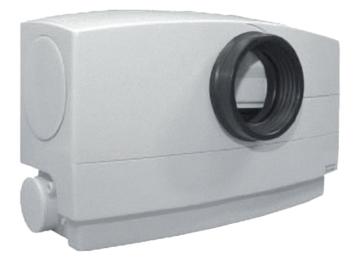
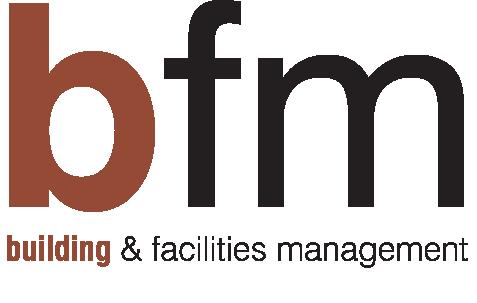
Building & Facilities Management editorial content covers all the major FM areas of interest within the workplace and the built environment.
This includes industry developments, company news, case studies and application stories, product news as well as articles from leading authorities within the marketplace.
To find out more information about BFM Magazine or to subscribe, please visit www.bfmmagazine.co.uk
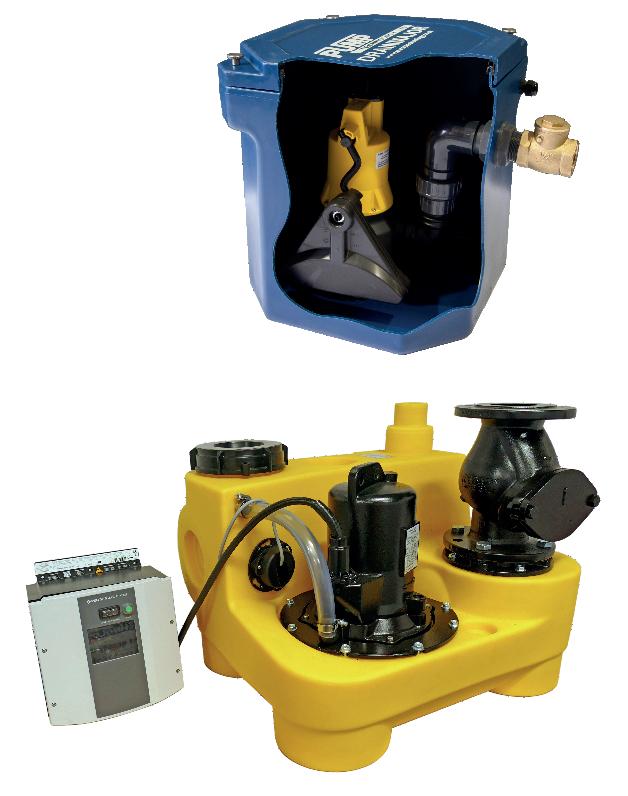
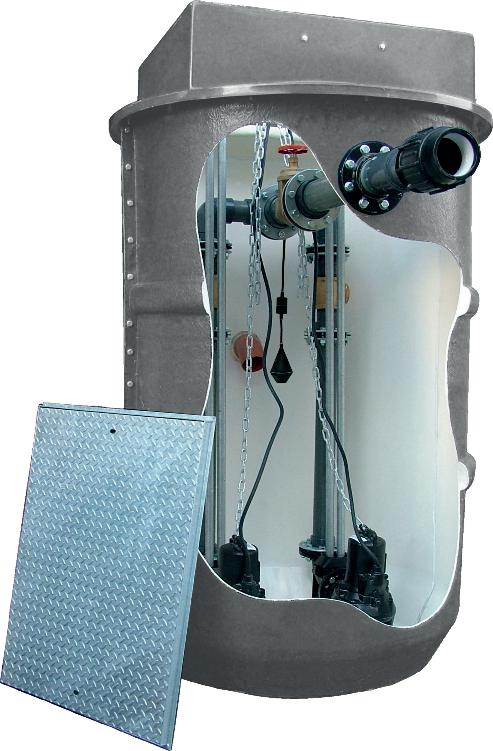
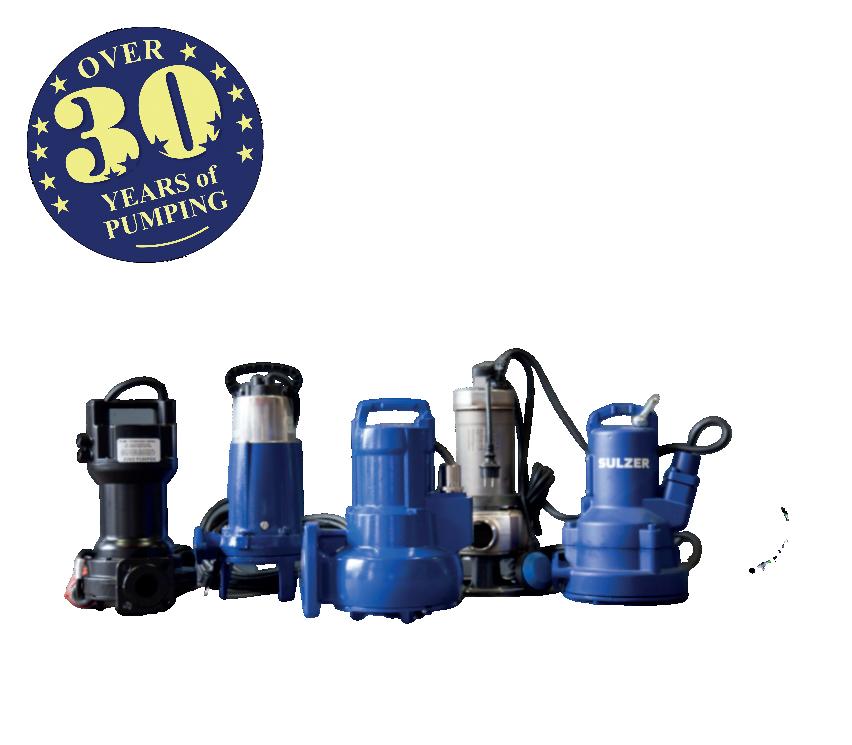

David Connacher, Marketing Manager of West Fraser, discusses
the many stakeholders responsible for the success or failure of a building
When judging the success or failure of a building, it is often the architect who comes under scrutiny. After all, architects have overall responsibility for a building’s design, aesthetics and functionality. What is easily forgotten is that they are interpreting their client’s ideas and being influenced and constrained by conventions and regulations; they are grappling with the requirements of planners and end users, not to mention the limitations of budgets.
Quite simply, a building is not just an architect’s challenge. In reality, many stakeholders must take responsibility when blameor credit - is apportioned for how a building works and its wider
impact. Equally, the idea that architects can save the planet through their work is flawed. They can formulate ideas but, essentially, they are bit players in the grander scheme of things.
Buildings account for nearly 40% of global energy-related carbon emissions* and have a significant impact on our natural habitats. We are all culpable and, instead of expecting architects to design our way out of the climate emergency, we must collectively instigate a paradigm shift in our behaviour. Buildings have to become selfsustaining but, even to come close to achieving this goal, stakeholder and societal values have to change and government and industry must actively accept responsibility rather than simply spouting hyperbole.
End-users play a critical role. Their behaviour determines whether a building achieves
its intended purpose. Even the most energy-efficient buildings will fail to deliver sustainability goals if occupants misuse systems or ignore the basic principles of how a building works. Similarly, even the best designed and constructed buildings will quickly fall into disrepair if poorly maintained.
We cannot go on prioritising low-cost, mediocre solutions over quality and sustainability. To play a part in mitigating the climate emergency, buildings have to be enduring, durable and innovative assets created through a collaborative and holistic approach.
* https://worldgbc. org/advancing-net-zero/ embodied-carbon/
For further information, call 01786 812 921 or visit https://uk.westfraser.com/

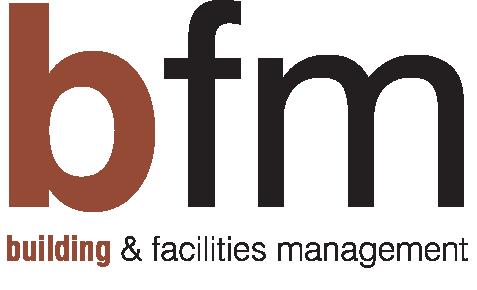



































































Managing your building’s HVAC systems just got easier. MELCloud Commercial offers you the tools to monitor, control, and optimise your HVAC systems from anywhere in the world. Whether you’re managing a single building or multiple sites, MELCloud puts full control at your fingertips.
• Real time energy consumption data to enable improved energy management
• Predictive and preventative maintenance to reduce HVAC downtime, thanks to remote diagnosis
• A choice of subscription packages tailored to best match your requirements and manage costs
Revolutionise your estate management with MELCloud Commercial. Scan the QR code below to discover how you can take control today!

Multrees Walk, in the heart of St James’ Quarter, a prestigious shopping destination in Edinburgh, offers a curated selection of high-end brands and premium shopping experiences. Earlier this year the retail centre witnessed an extension to a prestigious store that redefines luxury shopping in Edinburgh. As the revamped store prepared to open its doors, a critical element of its infrastructure was installed: a state-of-the-art fire detection system from Hochiki Europe.
High-end luxury retailers prioritise discreet fire detection systems to maintain their brand’s aesthetic appeal. These stores often feature meticulously designed interiors with clean lines and minimal distractions, meaning any visible fire detection devices can
disrupt the desired ambiance and detract from the overall shopping experience. By opting for discreet systems, these retailers ensure that fire safety remains a top priority without compromising the store’s luxurious atmosphere.
With its stunning interior design and exquisite collection of accessories and ready-towear items, this new store in Edinburgh, demanded a fire safety solution that was both discreet and highly effective. GB Integrated Systems (GBIS), specialise in providing fire detection and security system solutions for commercial properties. Having worked with Hochiki products for several years, trusting their reliability in retail environments, they knew the global fire manufacturer’s
ESP range would provide the perfect answer.
Mike Gray, Technical Director from GBIS told us: “We chose Hochiki as it offered a comprehensive solution for this project with a broad selection of devices, including smoke detectors, heat detectors, manual call points, base sounders and air sampling system.”
The project comprised over 40 analogue addressable devices and a sophisticated air sampling system, ensuring the highest standards in fire safety design. The air sampling system, seamlessly integrated into the fire detection loop, was a crucial component of the installation. Air sampling enables precise detection in hard-to-reach areas like ceiling voids, ensuring
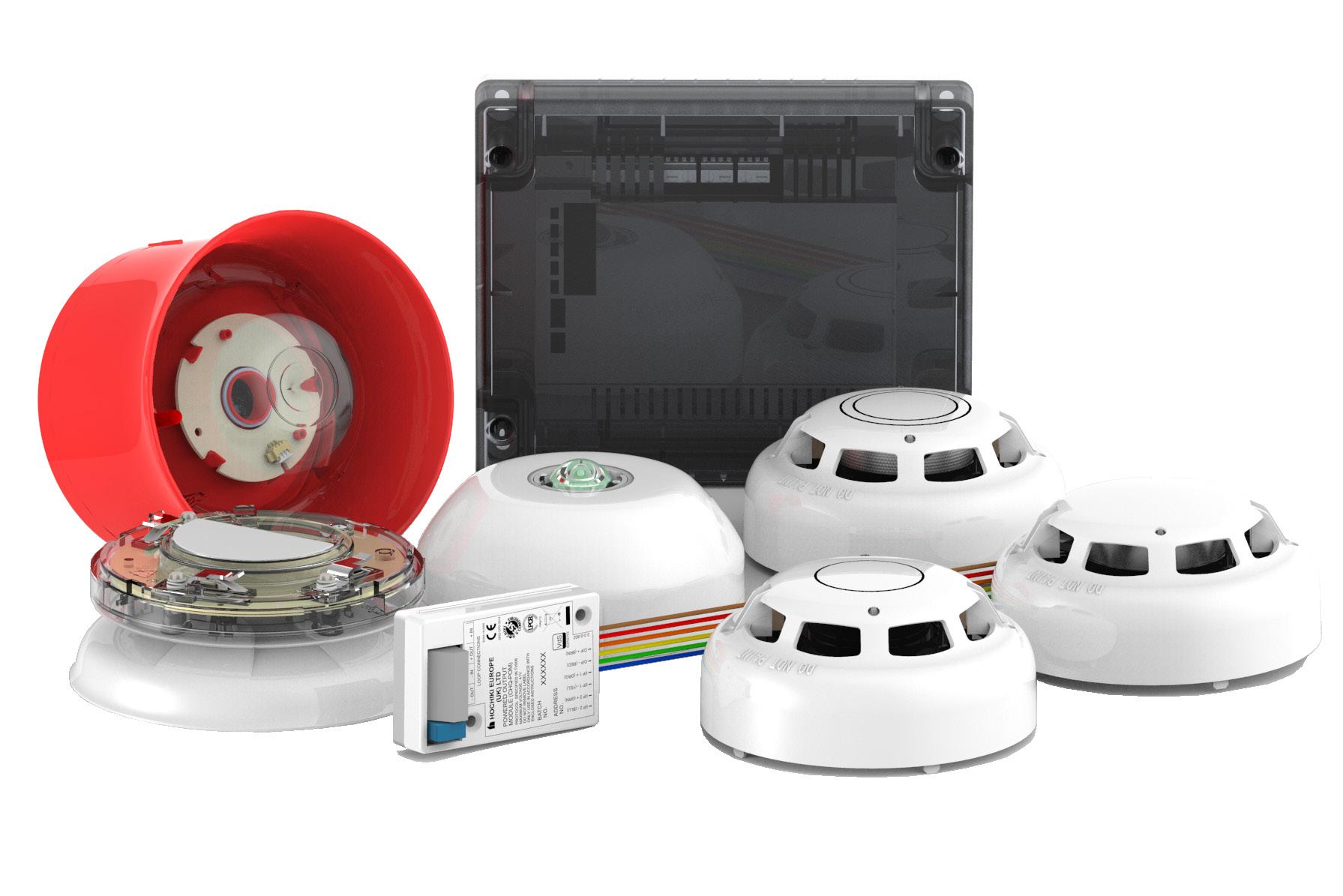
comprehensive coverage throughout a retail environment. The Hochiki devices respond accurately to real fire conditions while minimising false alarms through multi-sensor technology, environmental adjustments, and filtering mechanisms. With these features, the team at GBIS could reassure the luxury retailer that the fire alarm system could effectively differentiate between nonthreatening signals and actual fire hazards, thereby improving safety, reducing false alarms, and enhancing operational efficiency within the store.
A key challenge was interfacing the fire alarm system with the shopping centre’s security control centre. This complex integration required careful planning and execution to ensure that the system would respond appropriately
to different fire scenarios. In the event of a fire within the store, the system would trigger specific alarms and notifications, while a fire in the shopping centre would activate different alerts, minimising disruption to the store’s operations.
“Installing the fire alarm system in this premium, highend retail space is especially exciting because it brings innovative fire safety and sophisticated technology into a luxurious environment where safety and customer experience are paramount. The precision and reliability of our install aligns perfectly with the retail brand’s high standards, protecting valuable merchandise, ensuring shopper safety, and minimising disruptions from false alarms. With hidden devices and seamless integration, the Hochiki ESP range not only
safeguards the premises but also maintains the aesthetics, adding a layer of security that complements the brand’s reputation for excellence and customer care. It’s very satisfying to see the finished Hochiki install in premises of this nature and instils a great sense of pride in the work we do.”
This successful project showcases the power of Hochiki’s fire detection solutions to protect high-end retail environments. By combining innovation, reliability, and aesthetic appeal, Hochiki has helped to create a safe and secure space for customers to indulge in the ultimate luxury shopping experience.
To learn more about the ESP Range from Hochiki Europe head to the website to learn more.






Humidity control specialist, Condair, has released a new podcast on how to control humidity in cleanrooms. In this 10-minute interview, Dave Marshall-George, Sales Director at Condair, explains how to manage air humidity in tightly controlled manufacturing or research environments.
Dave comments, “Cleanrooms are used in a huge variety of industries and are classified by the level of particulate matter that is permissible in the air. Alongside air purity, humidity can often have a dramatic impact on the success of any cleanroom operation. Humidity maybe controlled to combat static,
eliminate moisture losses from sensitive materials, and prevent or encourage a reaction in a specific substance.
“However, providing the accurate humidity control needed for these sensitive environments can be a challenge. This short podcast gives a comprehensive overview, is ideal for anyone who is managing or designing cleanrooms and covers both humidification and dehumidification.” Dave concludes.
The podcast is available on www.condair.co.uk/podcast. Podcasts are a great way for anyone to get an understanding on a topic whilst in their car or
on their way to work. Condair now offers many of these bitesized learning sessions across a range of humidity-related topics on the link above.
The Condair Group is the world’s leading specialist in humidity control and evaporative cooling, with energy efficient, hygienic and innovative technologies for commercial, industrial and heritage applications. Condair is represented in the UK by Condair Ltd, which offers system design, manufacture, supply, installation, commissioning, maintenance and spares. You can find out more by visiting the company’s website at www.condair.co.uk.

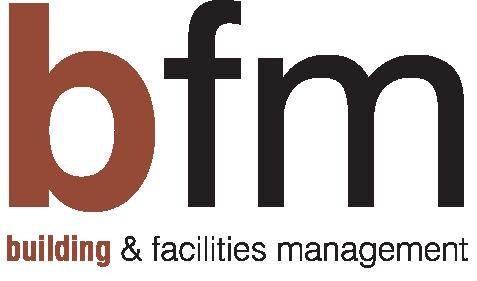
The new ADV-W range of 16 - 30 kW Air Source Heat Pumps
Cost-effective, low-carbon, proven and safe generation of domestic hot water for commercial projects







Compact, easy to install monobloc design
Consistent 55°C DHW at -25°C to +43°C ambient


For hybrid gas or electric DHW applications

Jason Petsch, CEO of OUTCO
What will the future of outdoor FM look like?
Maybe it’s already here.
Progress is hard to spot happening. We don’t suddenly wake up to self-driving cars, flying robots, or handheld computers that can do virtually anything. Instead, advances like this seep into our lives until we barely notice them - but also can’t imagine living without them. Ultimately, progress isn’t just about new technology, but the way innovations change us. Just look at mobile phones. Beyond connectivity and communication, mobile technology has changed our expectations, rewiring our brains with dopamine hits from games and social media, but also teaching us to expect even the most ordinary experience to be faster and more convenient. Where will your next meal come from? Ordered online from Tesco or tracked in real time to your door by Deliveroo?
This is what the future looks like. Through clicks, swipes or taps, our expectations as consumers of what good service looks like have been transformed. And while it seems a long way from the world of facilities management, this shift in expectations has already happened to our customers and stakeholders. Once people understand that things can be ordered online or via mobile with transparent pricing or real time tracking or the ability to feedback, they start to seek the same convenience elsewhere, whether in their personal lives or at work. People accustomed to using Amazon were already mentally prepared for Uber or Airbnb. Think of an industry
yet unchanged and you can be sure that the tech disruptors are already circling. These consumer examples demonstrate that transformations are about both the innovation and technology and the readiness to embrace its possibilities. I would argue that in the world of outdoor FM the first part - the technology - is already in place.
Our own experience as a company is a good case study of how quickly new technologies become normalised. OUTCO is an outdoor facilities management provider that started life as GRITIT, a Winter Gritting and Snow Clearance expert. In this sector, where slips and falls on ice can create real legal peril for organisations, the need to track, monitor and record service delivery in real time drove us to embrace technology from our company’s foundation. This meant providing on-site teams with effective mobile technology - our bespoke app - that could be used to direct and record activity and provide real-time updates and proof of service. To work, all this had to be connected to a powerful and reliable back-end IT platform. Especially in winter gritting – success involves working within a tight delivery window, often six hours or less, to execute thousands of jobs across the country. These

must be delivered to individual specifications, in an everchanging environment, often up against the elements and in the worst of the winter weather.
To achieve this, we use an integrated technology stack called Nimbus that brings together tracking and telematics software, with an algorithmic decision-making platform fed by the latest weather information. This ensures our teams are at the right place at the right time, delivering the right service. Having this data also changes the customer experience too. We created a customer app and portal that places live service information from the field in the palm of our client’s hands and the ability to communicate directly with our teams almost as an extension of their own business. This time-saving tool helps make our clients’ lives easier by giving them control, keeping them fully abreast of service delivery, and freeing up time to focus on other duties.
While our proprietary technology was built inhouse to respond to the extreme demands of winter maintenance, customers have embraced the same level of convenience in all other aspects of our outdoor FM services. Jobs tracked from start to finish, ensuring we service the right sites, giving managers the ability to see the location of our operators on a map confirmed by our telematics and GPS software. We can also offer performance monitoring against SLAs and KPI requirements via the app or web portal. Once the information is in our database, it’s just a matter of making this accessible in a way that’s useful to our customers. This might seem dry but, for busy managers, the ability to get a real time view of works across their portfolio at any point in time adds real value.
Yet we already know that as soon as things become possible, they rapidly move from being remarkable to being just the way things are. If Winter Gritting can be this easy to arrange and manage, why not other services like tree works, fencing or car park and pothole repairs? Already customers are asking, “if I can do this via a contractor’s app or portal, can’t we side-step even more admin and integrate this via an API so we can do it from our own software?” The good news is that this type of deeper integration is possible, and already in place for some of OUTCO’s clients. And this is where things are getting really exciting.
Jason Petsch says that ‘It’s not just about the technology but the way people embrace possibilities’. What would the equivalent to an Uber or Deliveroo look like in the world of Facilities and Property Management? Let’s imagine an operator visiting a site to trim hedges, notices a broken kerb that could be a potential hazard. They can
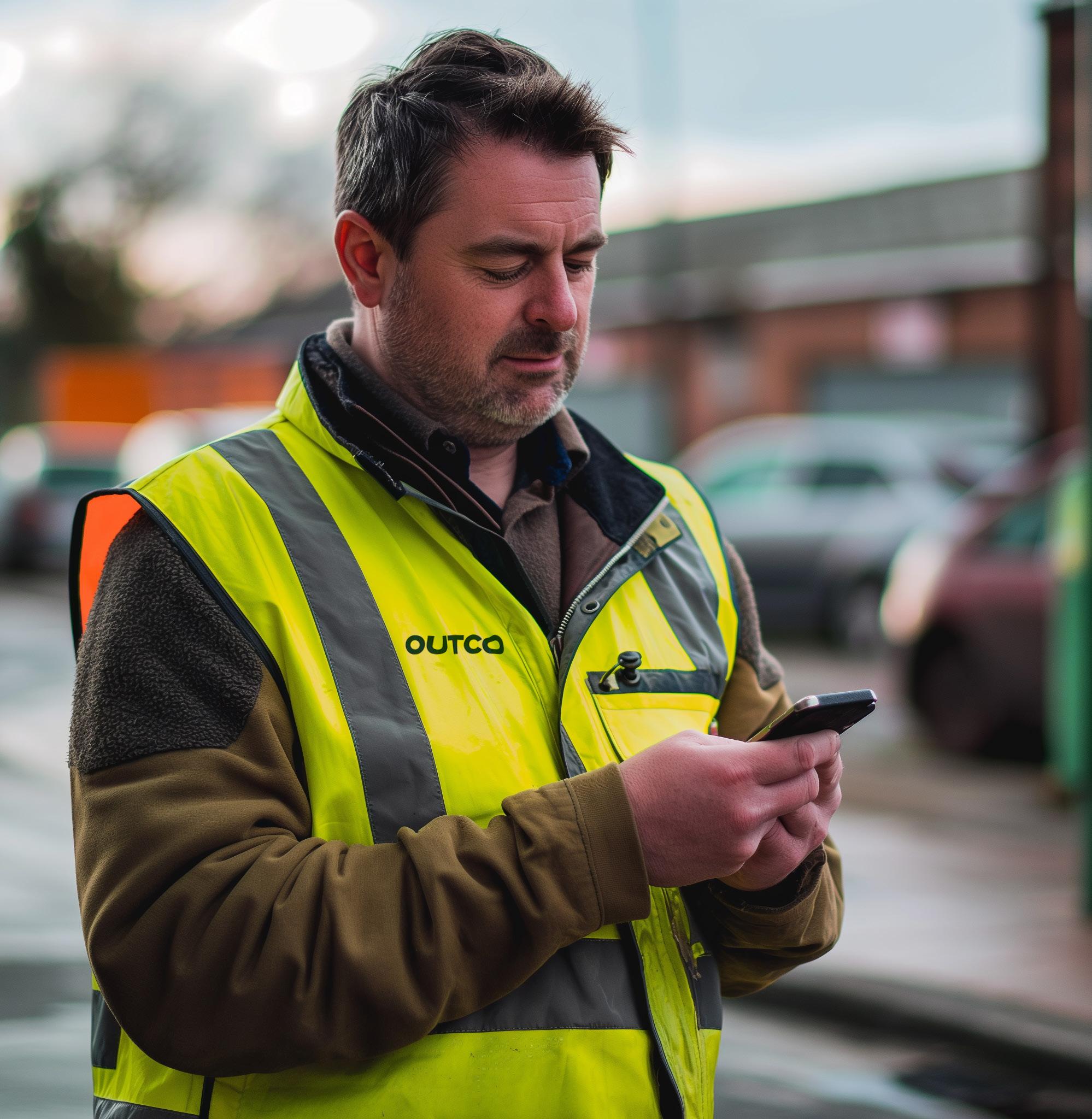
geo-tag and log the issue there and then via the app, which automatically triggers a quotation for repairs. This gets sent to the client via an email who can immediately see the issue - look at any submitted photos - and decide whether to authorise the repair.
Swipe to fix? OK, it might not reach Uber-levels of convenience, but think this type of model of service delivery is now arriving in our industry. All the technical building blocks are already in place and we’ve seen that customers are keen to adopt new models of working. Moreover, there’s a strong financial incentive driving change: whether it’s fixing potholes, tree surveys or an emergency fence repair, many smaller works in the outdoor estate can consume an inordinate amount of admin time in securing quotations and managing delivery. Hence, we think the embrace of greater efficiency, integration and
automation will happen rapidly. In case you missed it, the future has already started. For more information on how OUTCO can support your organisation this winter, contact us on 0800 0432 911 email enquiries@outco.co.uk or visit www.outco.co.uk
OUTCO protect, maintain and improve outdoor estate infrastructure providing specialist, end-to-end estate maintenance solutions powered by award winning technology. OUTCO provide winter, grounds, and asset maintenance services for commercial properties across the UK.
OUTCO effectively manages over 7,500 sites and is a trusted partner to organisations including BP, B&Q, Savills, BT, the NHS and most of the UKs major supermarket chains.
dormakaba is proud to showcase the pextra Q, a top-tier serrated cylinder lock system that sets new standards in security and longevity. One of the standout features of pextra Q is its industry-leading patent, which runs until 2042 – one of the longest patents currently available in the market. This unmatched duration ensures customers enjoy exclusive protection and peace of mind for the next two decades, far surpassing competitor timelines.
pextra Q stands out not only for its longevity but also for its advanced security features. Here’s a closer look at the sophisticated technologies that make it a top choice for high-security environments:
pextra Q offers advanced protection against unauthorised access with its patented highprecision branch groove, a unique undercut profile created with specialised machinery and a complex milling process, making it nearly impossible to duplicate. An optional active element in the lock cylinder detects this branch groove, blocking the barrel if an illegal duplicate is used.
pextra Q’s multi-layer security architecture includes vertical pin pairs, horizontal locking elements, and a centering pin to prevent lock bumping. Additionally, hardened steel elements in the barrel and housing provide robust
defence against drilling and pulling, ensuring maximum physical protection. Each key also features a unique serial number, providing precise cylinder assignments for added control and security.
pextra Q also offers full customisation for master key systems, supporting everything from singlekey solutions to complex, multi-level access plans. Designed according to detailed customer requirements, these configurations allow for better access control, cost savings, and minimised key volume.
Wide Range of Applications pextra Q is ideal for a range of sensitive and high-security

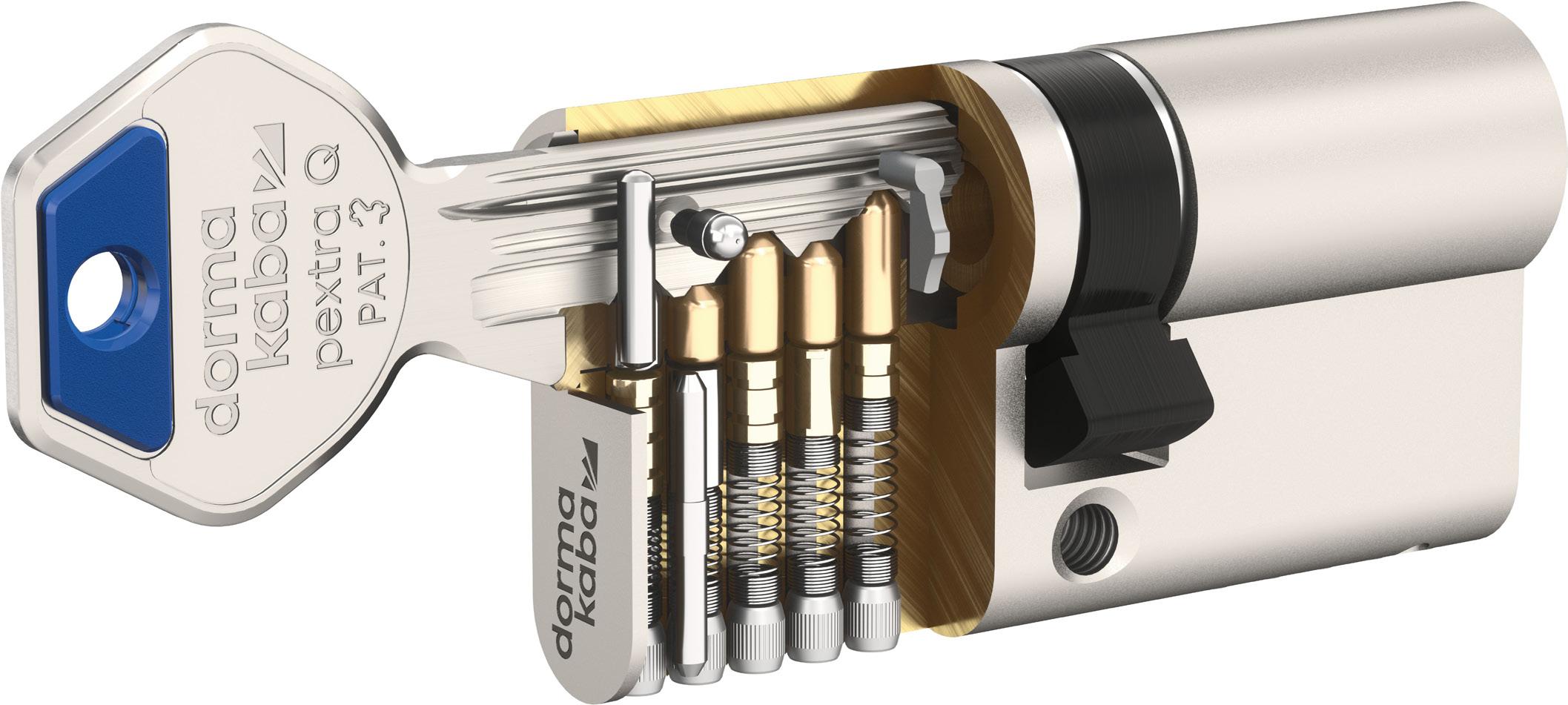
applications, including:
• Data Centres: Protecting critical data with robust, tamper-resistant locks.
• Healthcare Facilities: Ensuring controlled access to secure areas.
• Educational Institutions: Providing safety and access management in schools and campuses.
• Secure Storage Areas: Locking systems designed to handle controlled access and high security, such as museums and telecommunication cabinets.
Why Choose dormakaba?
Compliance with Industry Standards
dormakaba understands the importance of regulatory compliance. Our pextra Q is engineered to meet industry standards such as EN 1303. Rely on dormakaba to provide products that meet benchmarks for both physical security and electronic access, simplifying the compliance process.
Innovative Design and Technology
dormakaba continually invests in research and development to incorporate the latest technology and design trends into our products. This commitment ensures that our

solutions not only meet current security demands but are also adaptable for future needs, offering long-term value.
Global Expertise and Support
With a presence in over 130 countries, dormakaba brings global expertise and local support to our partners. Our knowledgeable team is available to assist with installation, training, and ongoing maintenance, ensuring comprehensive support is received throughout the product lifecycle.
With its impressive patent extending until 2042 and specialised security features,
the pextra Q system stands as the pinnacle of mechanical key technology, designed specifically for high-security applications. Offering multilayered protection and unmatched durability, the pextra Q is ideal for safeguarding today’s most secure facilities. dormakaba’s commitment to innovation is evident in every aspect of the pextra Q, setting new standards in reliability and control for commercial environments.
Learn more here: https:// www.dormakaba.com/ gb-en/offering/products/ mechanical-key-systems/ cylinder-locks-with-serratedkeys/pextra-q--dk_51100
By: Heidi Schmidt, Global Sales Manager, Opticom Tech
In industrial environments, standard video monitoring systems often fall short of meeting specific operational demands. Niche industries like sawmills, mining operations, and food processing plants require surveillance solutions that can withstand harsh conditions and address unique challenges.
In niche industries, boxed solutions don’t work because they are tailored for wide applications, like shopping malls and other commercial buildings. It’s a two-fold challenge:
1. You need ruggedized video monitoring solutions
2. Your real-time monitoring needs to be robust and reliable Why? Let’s find out.
Each industrial sector presents distinct challenges that influence its surveillance needs:
• Sawmills: High-vibration environments with dust and debris need cameras that can endure physical impacts and provide clear imaging. Read more about the right cameras for sawmills.
• Mining Operations: Low-light conditions and exposure to harsh elements require cameras with superior durability and performance. Find out how to improve mining operations with the right video monitoring system.
• Food Processing Plants: Strict hygiene standards demand equipment that is easy to clean and resistant to bacteria and corrosion. Learn how video
monitoring enhances food processing operations.
• Demolition: Cameras give demolition crews an eye on the inside without putting them in hazardous situations. Learn the benefits of video monitoring on demolition sites.
• Waste Management and Recycling: Facilities managing tons of waste material need a safe way to monitor heavy machinery and processing operations. These are just a few examples of niche industries that have a hard time finding off-the-shelf video monitoring solutions that accomplish your goals. Even within an industry, each facility is different. A comprehensive, customizable, scalable video monitoring solution allows the facility team to focus on other priorities rather than on constantly updating the video monitoring system.
The Building Blocks of a Custom Video Monitoring System
At Opticom Tech, we know that every plant, mine, or sawmill needs a customized approach — we’ve helped set many of them up. We have the building blocks to assemble a solution of hardware and software that gets you to your goals.
Here’s what goes into a custom video monitoring solution:
1. Cameras: The Core of Video Monitoring Systems
Briefly put, you have several options for ruggedized cameras built for industrial applications:
• Industrial Cameras: Built to withstand harsh conditions, these cameras are ideal for heavy industries.
• Explosion-rated Cameras: Suitable for hazardous environments where safety is paramount.
• Stainless Steel Cameras: Designed for environments requiring corrosion resistance and easy cleaning.
• Thermal Cameras: Useful in low-visibility conditions because they provide imaging based on heat signatures.
For example, Opticom’s CC04 camera is engineered to endure the harshest of environments. If it survived being hit by a log, it can survive almost anything.
In harsh environments, the mounts are just as important as the cameras themselves because they provide stability and increase the cameras’ lifespan.
• Vibration-resistant Mounts: Essential for high-vibration environments like sawmills and manufacturing plants with heavy machinery.
• Adjustable Mounts: They allow for precise camera positioning, critical for detailed observation.
• Corrosion-resistant Mounts: Ideal for facilities exposed to chemicals or salty air, ensuring longevity and reliability.
The right display solutions depend a lot on where monitoring is happening in your plant, mine, or sawmill. Is the operator watching the
feed at a close proximity to the sawmill operations? Or is monitoring happening in the back office? Or both?
Our industrial customers typically need one of these two options:
• Industrial HD TVI Monitors: Designed for high-definition video signals and for non-HD (analog) video signals, they provide clear and detailed images.
• Industrial IP Network Monitors: They connect directly to your network, which ensures seamless integration with IP cameras.
Your choice of storage solution should follow the regulations in your field (some industries are required to keep the footage for longer) and meet

your needs (do you need realtime feeds, recordings, or both). In most cases, one of these three options is what you need:
• Digital video recorders (DVRs): They support multiple camera inputs and offer high-profile compression for efficient storage for analog or HD-TVI cameras.
• Network video recorders (NVRs): They are available in POE and nonPOE versions, suitable for IP camera systems.
• Software Solutions: These are recommended for larger scale systems with 75+ network cameras.
How to Build a Custom Video Monitoring System for Niche
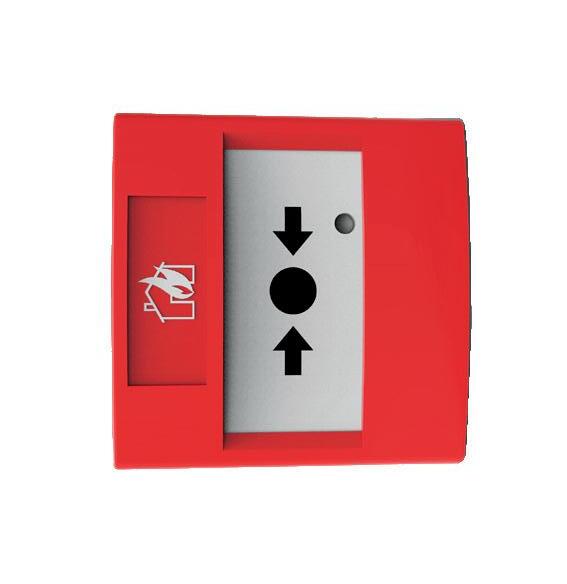
two rules of thumb:
Be very clear on the purpose of your monitoring system. Do you only need it for surveillance, do your operators need it in order to efficiently do their job, or do you want to use it to improve your operations? If you design, or have someone help you design, the right system, all of these goals can be accomplished.
Build with scalability in mind. Your facility might expand. Or your scope may change to where you need cameras in new areas of your facility. Either way, it’s important to make sure that you can add new cameras,

Simple planning and fast commissioning, less time on-site

Self-configuring mesh network offering a high level of reliability
Perfect for historic sites, retrofits, sensitive environments, schools, hospitals and hotels





Act now to plan your recycling systems and stay compliant, advises independent janitorial and cleaning distributor.
With ‘Simpler Recycling’ reforms taking effect on 31 March 2025, businesses should prepare now to meet the new policy requirements, urges Jangro. The UK & Europe’s largest network of independent janitorial and cleaning distributors is supporting businesses in their preparation with a range of tailored, innovative products.
All commercial facilities in England – including healthcare establishments and academic institutions – with more than 10 full-time employees will have to separate a core set of recyclable materials from their general waste at the point of collection for processing. These new regulations will mean that businesses will have to separate groups of recyclable materials, including dry recyclables (which can be grouped together) and food waste as a dedicated collection, from general waste on site. Non-compliance with this new law could lead to significant fines.
Jangro offers a wide range of multi-stream recycling bins and stations, making it easier for organisations to comply
with the new regulations, with a system that’s right for their business, and be fully prepared for the upcoming changes.
A Slim Jim Recycling Station makes a versatile choice. With a choice of seven colours and four lid openings, it can be customised to fit a company’s bespoke requirements. Offering uncompromised performance and durability, these stream recycling stations are the perfect waste solution for space conscious environments.
Manufactured in the UK from 100% post-consumer recycled plastic, the uBin Recycling Bin not only enhances sustainability but also boasts a sleek and elegant design. It includes a large, overhanging lid to conceal liners, along with an air hole for easy bag removal. The angled top improves product and label visibility, while the tall design ensures the bin opening is at an easily accessible height, making it extremely user friendly.
The Jangro range of Indoor
Slimline Swing Bins features modern designs and colour-coding to adhere to hygiene standards and prevent cross-contamination.
Jo Gilliard, CEO of Jangro, comments: ‘The benefits of transitioning to simpler recycling are huge: improved recycling rates, reduced waste costs, and greater operational efficiency, not to mention a healthier planet! It’s critical that businesses act now so they are ready when the new rules come into force on 31 March 2025. We are committed to helping companies get set for this major change in waste management – our wide range of high-quality recycling stations and bins will help them comply, all at consistent, competitive prices.’
From 31st March 2027, the Simpler Recycling legislation will extend to businesses with fewer than 10 full-time employees, plus plastic film must also be separated for recycling from this date.
For more information or to place an order, visit www.jangro. net or call 01204 795 955.
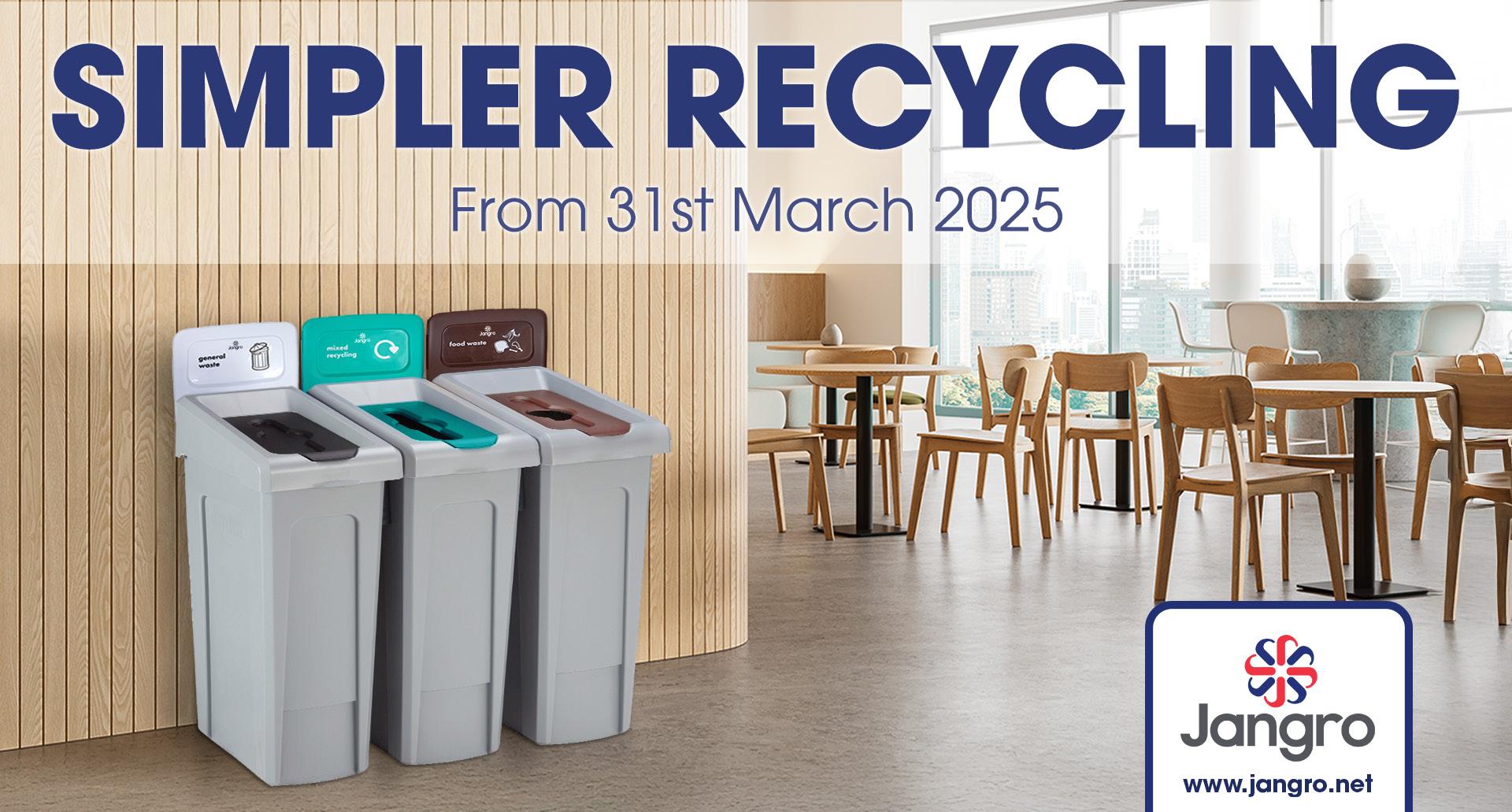


Extract insights from your data and empower decisions that reduce consumption, cost, and emissions
Reduced energy costs
Unlock cost savings by identifying and addressing inefficiencies across your building systems using real-time data insights
Accelerate your sustainability initiatives by turning operational data into impactful actions, supporting your ESG commitments
Make smarter, faster decisions with a platform that transforms raw data into insights, optimising performance
Synapsys Building and Energy Monitoring Software helps businesses across multiple industries turn buildings and plant data into insights that drive sustainability initiatives with more speed and precision. +44 1444 246 128
Email | enquiries@synapsys-solutions.com Web | synapsys-solutions.com
The UK has 25 years to meet the net zero by 2050 target set out by the Government. In light of this, Graham Paul, Service Delivery Director at TEAM Energy, speaks to its efficiency and carbon reduction experts about the future of energy efficiency and net zero in the UK.
When it comes to emissions reductions, it is still widely recognised that energy efficiency is the ‘first fuel’ en route to net zero because it is one of the quickest and most affordable ways to cut emissions. However, new research has shown that 95% of companies globally do not have energy efficiency plans in place.
Having worked with many UK organisations, I know first-hand that as a nation we’re doing better than most thanks to the growing body of legislation mandating organisations to audit, plan, and report on their actioned energy efficiency measures.
Although these can be timeconsuming, they are necessary. By using energy wisely, at the right times, with the right technology, and transforming our buildings to eliminate waste, organisations can save money, protect themselves from energy price fluctuations, and reduce their emissions.
Such changes can form the backbone of their carbon reduction plans. As supply chain emissions increasingly determine purchasing and investor decisions, not reducing emissions effectively removes organisations from buyers’ and investors’ considerations.
As 2024 comes to a close, Kier Starmer has accelerated the UK’s journey towards net zero by 2050. Over the next ten years, the UK must now
reduce its emissions by 81% compared to 1990 levels.
Energy efficiency will continue to play a central role for UK organisations on this new pathway, alongside bill management and carbon reduction planning. To find out what the first year on this new trajectory will be like for businesses and how they can navigate it, I spoke to some of our energy management and carbon reduction experts, starting with Tim Holman, Head of Operations at TEAM Energy.
What does the new Government mean for energy efficiency, have there not been rumours of the energy efficiency standards changing?
Through a parliamentary question reply in December and at the Labour Party conference in October, the Government suggested that minimum energy efficiency standards for commercial buildings would increase, possibly from an E to C rating by 2030. Though not certain, any changes could be announced in the new year. However, more concrete is the Energy Performance of Buildings (EPB) framework consultation, which opened on 4th December 2024 and will close in February 2025, with changes set to be implemented from early 2026. This could introduce reduced validity timescales below 10 years for Energy Performance Certificate (EPC)

and Display Energy Certificate (DEC) (for smaller buildings <1000m2) as well as requiring EPCs to be valid at all times, making them a more frequent requirement for commercial landlords and a necessity for re-letting and lease renewals.
Alongside this could be changes to what EPCs measure with new and amended metrics. These potential changes could lead to the implementation of substantial energy efficiency measures sooner rather than later.
I would advise any landlord to get ahead of the curve and ensure now that your buildings and workplaces are ready for energy efficiency improvements. Failing to do so could lead to a loss of revenue or missing out on securing finance dependant on EPC ratings, for example.
The exact details of the Minimum Energy Efficiency Standards changes are far from certain, neither have the ESOS deadlines been. So, I spoke with Senior Energy Consultant, Sam Arje to help shed light on the situation.
The ESOS deadlines have shifted a lot, what does 2025 look like for businesses?
The start of the year will see organisations still submitting their ESOS phase 3 action plans, past the December deadline due to the Environment Agency’s (EA) promise to accept late submissions until the 5th March 2025. Hopefully those organisations who have completed their phase 3 audits have already prepared their action plans in full. Crucially, ESOS action plans must strike a balance between committing to meaningful action and not overshooting what’s possible, especially now the plans and progress reports against them will be made public.
Organisations must act with their reputations and competitive advantage at the forefront of their minds, which will require more collaboration throughout the organisation and a shift towards a holistic energy management programme rather than focusing simply on the four-year cycle. As Phase 4 (which runs from 6th December 2023 until 5th December 2027) auditing begins, a holistic energy management approach will help support their now-required net zero planning and actions too.
2025 will be the start of Market-wide Half-Hourly Settlement (MHHS) too. To find out more about both sides of the coin, I asked Head of Business Change, Greg Armstrong his opinion.
As we’ve seen there are regulatory changes for energy efficiency ahead. What about energy markets?
From April 2025 onwards, energy suppliers will begin to migrate their systems and transition their customers to half-hourly bill settlements. This is predicted to create a ‘data deluge’ for energy suppliers, leading to a sharp increase in
the potential for organisations’ energy bills to contain errors over the short term. Energy management and bill validation can address this issue. But the bigger opportunities are the tariffs and the unprecedented level of power that energy-users can unlock using accurate energy data. Suppliers must be commercially sensitive to 30-minute windows of energy use, energy users with the right data will have every opportunity to benefit from that.
Processing that data will be an energy cost itself, and much of that task is done by AI. Tom Anderton, Head of Customer Success at TEAM Energy, provided his insight on this issue.
How will data and AI impact energy and net zero? We’ve heard a lot about the energy drain from AI – Tom, what do you think about that?
The challenge of energy security and net zero must be tackled with varied tools, prime among these are AI and big data. 2025 will see an uptick in both. We’ve just seen the launch of the Manchester Prize encouraging start-ups and tech entrepreneurs to decarbonise the grid in the UK, and COP 29 had its first ever ‘digitalisation day’. In their own organisations, energy managers can use AI and data to get better insights into their energy estate, reduce their emissions, and mitigate the risks of energy security and climate change.
On a larger scale it’s true that data and AI have energy costs associated with them, but they’re often exaggerated, accounting for one or two per cent of energy use based on the International Energy Agency (IEA) figures. Compared to buildings, for example, that’s a small figure. And, importantly, the increase in AI can also help counter building energy use; so the small percentage increase incurred is made up for in savings.
Whatever energy and emissions savings organisations make must now be reported, in detail, and to the public. Rob Webb, Bureau Operations Manager, lending his expertise on this topic.
Increasingly many companies are now in the scope of sustainability reporting. What do they need to be mindful of when it comes to data, Rob?
We’ve now reached the ‘tipping point’ where sustainability reporting, including energy and carbon reporting, is mandatory and the primary form of nonfinancial reporting driving investor decisions. Because of this, the expectations around the accuracy of organisations’ reporting have increased massively, causing almost all CFO and finance leaders to report problems with the nonfinancial data they receive.
Visibility, consistency, incompleteness, and outof-date data are the top issues such leaders face. Organisations must adopt smart systems to eliminate “single point of time” data, search for interoperable tools that can connect to organisation-wide BI and management systems, and seek out expert support to get the right solution in place.
So, in conclusion, 2025 has many deadlines and key dates that organisations need to be prepared for. Acting now will enable them to make small steps towards better energy management, carbon reduction, and overall integrated reporting. Leaving it too late will be costly, the benefits will be lost, and key deadlines could have passed by. As we’ve seen, many organisations will be under more scrutiny in 2025 and beyond too. All stakeholders expect accurate sustainability reporting, and more of organisations’ complex emissions and energy reduction planning will be made public.
